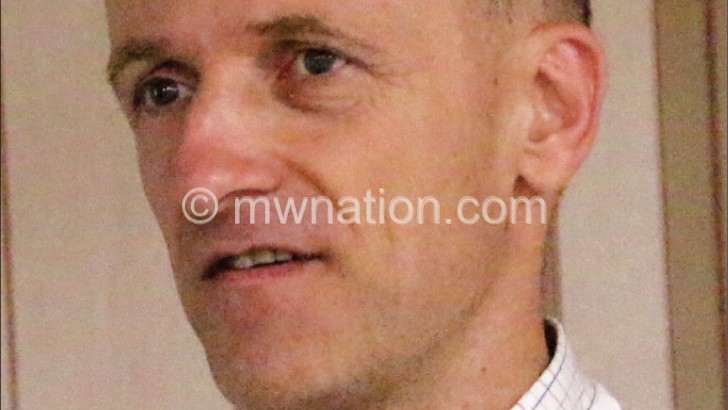Urine tests for faster TB diagnosis
Diagnosis of TB among people living with HIV is not easy. In this article, our News Analyst MERCY MALIKWA highlights trials that could reverse the trend
Tuberculosis (TB) continues to pose a significant challenge to the country’s efforts to end death of people living with HIV.
Globally, the disease remains the main cause of hospitalisation and deaths among people living with the virus which causes Aids.

In Malawi, almost 16 960 TB cases were reported in 2016, down from 17 035 in 2015.
According to National Tuberculosis Control Programme manager Dr James Mpunga, 53 percent of these TB patients were also infected with HIV.
“Deaths associated with HIV and TB are at four percent per year for all sputum-positive TB patients. The risk of TB increases 20-fold in HIV-positive individuals compared with HIV- negative individuals,” he says.
While it is expected that, with a risk so high, diagnosis of TB should be faster in people diagnosed HIV-positive to allow them start taking treatment earlier, the testing methods available in the country are slower and not helping the situation.
Dr Bwanali Jereni, head of medical department at Zomba Central Hospital, quotes studies that have shown that with sputum microscopy and gene-expert for TB screening, diagnostic yield is at approximately 30 percent.
“This means 70 percent of suspected TB patients are left undiagnosed because sputum specimen submission from patients who do not have productive cough like most of HIV patients is quite a challenge,” he says.
This is a recipe for disaster as the majority of TB cases are left undetected and individuals do not receive the required treatment in time.
“Late presentation of TB in all patients is associated with relatively poor treatment outcomes. This is even worse for HIV-positive patients who might have compromised immunity levels,” says Mpunga.
This, therefore, calls for better and quicker diagnosis among PLHIV.
Just last year, World Health Organisation (WHO) director for global TB programme Mario Raviliglione stressed the need for Malawi to expand TB interventions to reduce high incidences of the disease.
He said: “Malawi is one of the developing countries where the TB epidemic is a major concern and it is closely associated with HIV and Aids.
“This calls for expansion of interventions such as early TB diagnosis, including universal drug-susceptibility testing, systematic screening of contacts and high-risk groups.”
As the search for better and quicker diagnosis methods is on, medical and research organisation Dignitas International (DI) is conducting a clinical trial to see if screening HIV-infected patients admitted to hospital in southern Africa for tuberculosis using rapid urine-based diagnostic tests has an impact on mortality.
The new bedside urine-based test, touted to diagnose TB within 30 minutes, is called TB-Lam and it is being used as an addition to the routine sputum tests.
The trial, referred to as Stamp, started in 2015 and was expected to end in October.
Almost 1 300 people diagnosed with HIV enrolled for the study conducted at Zomba Central Hospital and Edendale Regional Hospital in South Africa.
They were aged above 18, in need of acute admission to the hospitals’ medical wards, provided informed consent and lived within Zomba and not intending to move away during follow-up period.
Every day, Jereni and other medics assess patients newly admitted to the medical ward at Zomba Central Hospital to ascertain if they are eligible for enrolment in the trial.
Those found eligible are approached by a research nurse or clinical officer.
“After obtaining the patient’s consent, we fill questionnaires through oral interviews and biological samples are taken for laboratory testing. Apart from blood samples, participants are asked to submit sputum and urine for TB screening,” he says.
The samples are tested the same day they are collected and results are delivered to the participants within 24 hours.
Interestingly, the results comprise a CD4 count, haemoglobin and whether the TB screening tests were positive.
DI site-principal investigator Dr. Joep van Oosterhout says that critical patients often struggle to produce sputum and those who have extra-pulmonary TB generally do not cough and also do not produce sputum, thereby making diagnosis difficult.
“We have learned that it is feasible to get urine samples from virtually all admitted patients, while it is much more difficult to get sputum samples. This is an advantage of urine-based TB testing,” he says.
However, while Oosterhout hopes for better results “as positive fruits” are already being noted.
“Since the trial started, there has been improved management of patients with HIV-related infections, especially those with TB, says Jereni.
Generally, there is an increase in the number of patients diagnosed with TB and those put on treatment.
“There is also general observation that treatment outcome, morbidity and mortality among TB patients with Aids, has improved, but whether this study has played the role, this will be determined after the results are out,” he says.
At national level, Mpunga says the study will help the Ministry of Health (MoH) in understanding the contribution of newer diagnostic tests in identifying TB among HIV-positive patients.
“The yield of the conventional methods in picking TB among HIV positive patients is low and hence more sensitive methods are always welcome. Evidence on the effectiveness of Lam being a newer test is sought in order to help inform policy,” he says. n





